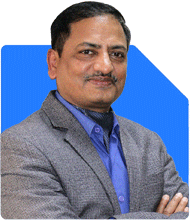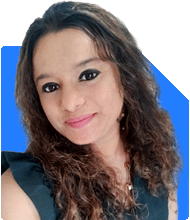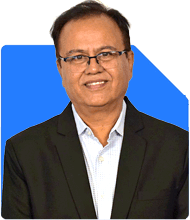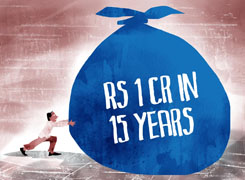dear sir, I am planning to invest ?5,000 per month for my daughter's education or their marriage expenses, with a timeframe of at least 20 to 25 years in a SIP. Which fund would you recommend for this duration? and is it advisable to open a demat account on her name, she is currently 7 years old?
Ans: You are planning to invest Rs 5,000 per month for your daughter’s education or marriage expenses, with a timeframe of 20 to 25 years. This is a great step towards securing her future. It gives you a long-term horizon to grow your wealth. Let's explore the best way to approach this.
Systematic Investment Plan (SIP) for Long-Term Goals
For a long-term goal like your daughter's education or marriage, SIP is a smart choice. SIPs offer disciplined investing, and the power of compounding can work in your favour over 20-25 years.
Equity Mutual Funds: Since your goal is long-term, equity mutual funds are a good option. They tend to perform better than other investment options over longer durations.
Flexibility of SIP: One of the advantages of SIP is that you can start small and increase the amount later as your income grows. This flexibility ensures that you can stay consistent with your contributions.
Ruled by Market Cycles: Equity mutual funds are subject to market ups and downs. But over a 20-25 year horizon, these fluctuations tend to even out. Historically, equity mutual funds have delivered inflation-beating returns over the long term.
Actively Managed Funds vs Index Funds: Actively managed funds could be a better option than index funds in this case. While index funds track a market index, they might miss out on the ability to outperform the market. Fund managers in actively managed funds can take advantage of market opportunities to generate better returns.
Importance of Diversification
Diversification reduces risk and gives better stability to your portfolio. Over 20 to 25 years, market conditions will vary. A well-diversified portfolio ensures your money grows steadily.
Equity Diversification: You can diversify within equity by investing in a mix of large-cap, mid-cap, and small-cap funds. Large-cap funds are more stable, while mid-cap and small-cap funds have the potential for higher returns but come with higher risk.
Adding Debt Mutual Funds: Adding some portion of debt mutual funds can provide stability, especially as you get closer to your goal. Debt funds are less volatile and can act as a cushion when the equity markets go down.
International Exposure: Some portion of your portfolio can also have international exposure, which adds a layer of diversification across geographies.
Regular vs Direct Funds: What Should You Choose?
If you have heard about direct mutual funds, it may seem tempting because they offer lower expense ratios. But direct funds are not always the best option unless you are an experienced investor who can manage everything on your own.
Direct Funds Drawbacks: Investing in direct funds means you need to track the market yourself. You will have to decide when to buy, switch or exit. It can be time-consuming and requires knowledge of market trends. There is no professional guidance or hand-holding.
Benefit of Investing Through an MFD with CFP Credential: Instead, choosing a regular plan through a certified financial planner (CFP) ensures you get expert advice. Your CFP will track the market for you, rebalance your portfolio when needed, and help you align it with your financial goals. The cost of a regular fund might be slightly higher due to the expense ratio, but the guidance and personalised planning are worth it.
Tax Implications You Should Know
When investing for such a long period, it's important to consider the tax implications as well.
Capital Gains Tax: In equity mutual funds, long-term capital gains (LTCG) above Rs 1.25 lakh are taxed at 12.5%. Short-term capital gains (STCG) are taxed at 20%. It’s advisable to plan your withdrawals smartly, keeping these tax rates in mind.
Debt Funds Taxation: In debt mutual funds, both LTCG and STCG are taxed as per your income tax slab. Debt funds are more tax-efficient than FDs, especially over the long term.
Should You Open a Demat Account for Your Daughter?
Now, let’s address the question of whether it’s advisable to open a Demat account in your daughter’s name.
Demat Account for Minors: Technically, you can open a Demat account in your daughter's name even though she is 7 years old. However, as a minor, she won't have any control over the account until she turns 18. You, as the guardian, will have to manage it on her behalf.
Practicality of Opening a Demat Account: It’s more practical to invest in your own name and earmark these funds for your daughter's education or marriage. You can always transfer the money or investments to her when needed. Opening a Demat account at this stage might add unnecessary complexity, especially when you can manage her investments easily from your own account.
Ownership Considerations: While it may seem like a good idea to keep her investments separate, the tax liabilities will still be on you until she turns 18. Managing investments from your account simplifies the process and keeps everything in one place.
Keeping Inflation in Mind
Inflation is an important factor to consider when investing for long-term goals like education or marriage. Costs, especially in education, rise significantly over time. It’s crucial to choose investment options that can give you inflation-beating returns.
Equity for Higher Returns: Equity mutual funds can help beat inflation in the long term. Over a 20-25 year period, equity investments have the potential to generate returns higher than inflation.
Regular Review: While you don’t need to check your investments every day, it's wise to review them annually or semi-annually. This ensures that your investments are on track to meet your goals, and you can make adjustments if needed.
Don’t Depend on Insurance-Based Investment Plans
It’s common for parents to be attracted to investment-cum-insurance policies for their children's future. However, these policies often give lower returns compared to mutual funds.
Investment-Cum-Insurance Policies: Such policies may promise assured returns, but the returns are often quite low. It is better to keep your insurance and investment separate.
Consider Surrendering: If you currently hold any investment-cum-insurance policies, you might want to consider surrendering them and reinvesting the proceeds into mutual funds. A dedicated mutual fund portfolio will grow much better over the long term.
Final Insights
Your decision to invest Rs 5,000 per month in SIP for your daughter's future is a wise one. With a 20-25 year horizon, equity mutual funds offer you the best opportunity for growth. Actively managed funds, diversified across large-cap, mid-cap, and small-cap, provide stability and the potential for higher returns.
Opening a Demat account in your daughter’s name is not necessary at this stage. Managing her investments from your account is more practical, and you can transfer the funds to her when needed.
Keep insurance and investments separate. Focus on long-term growth through mutual funds, and consider investing through a certified financial planner (CFP). They can guide you to ensure your portfolio stays on track for your daughter’s future education or marriage expenses.
Best Regards,
K. Ramalingam, MBA, CFP,
Chief Financial Planner,
www.holisticinvestment.in
https://www.youtube.com/@HolisticInvestment































